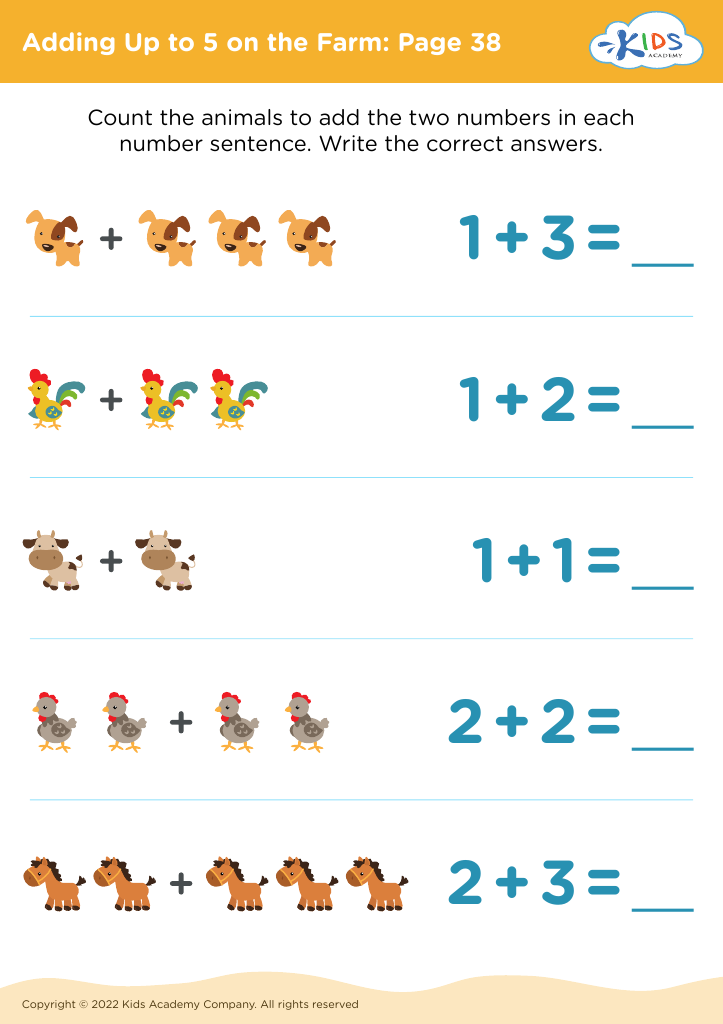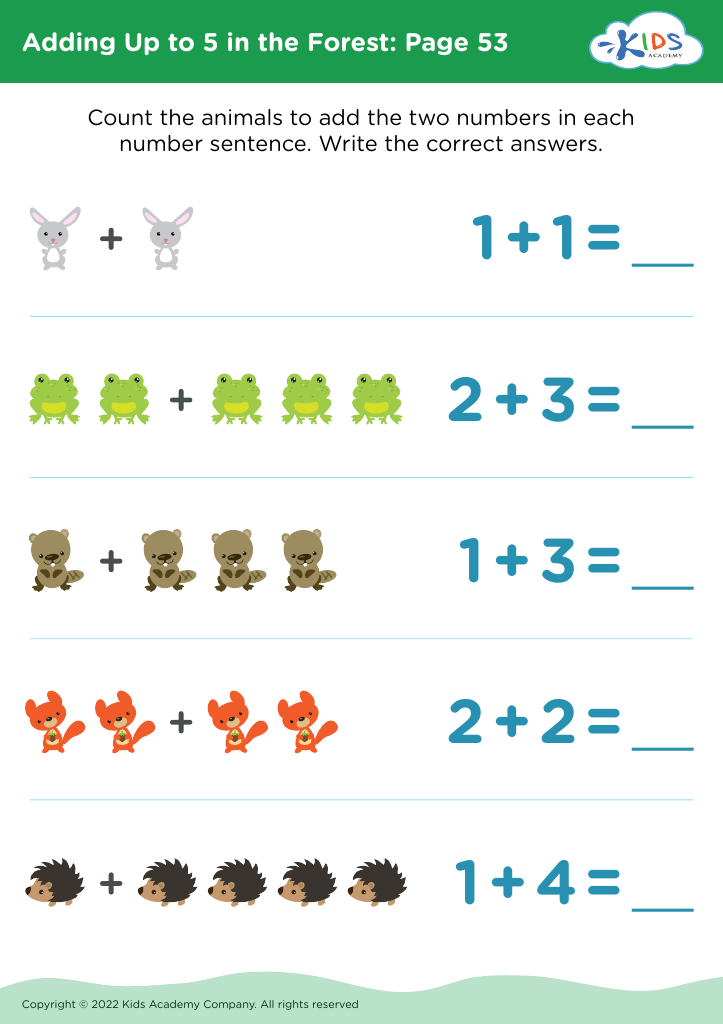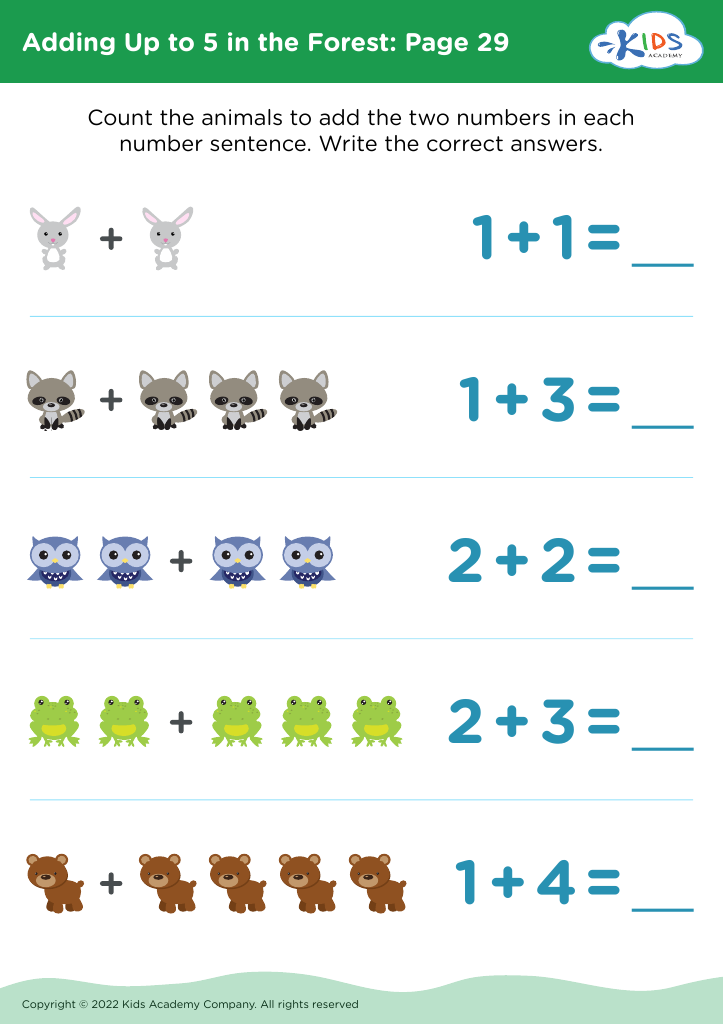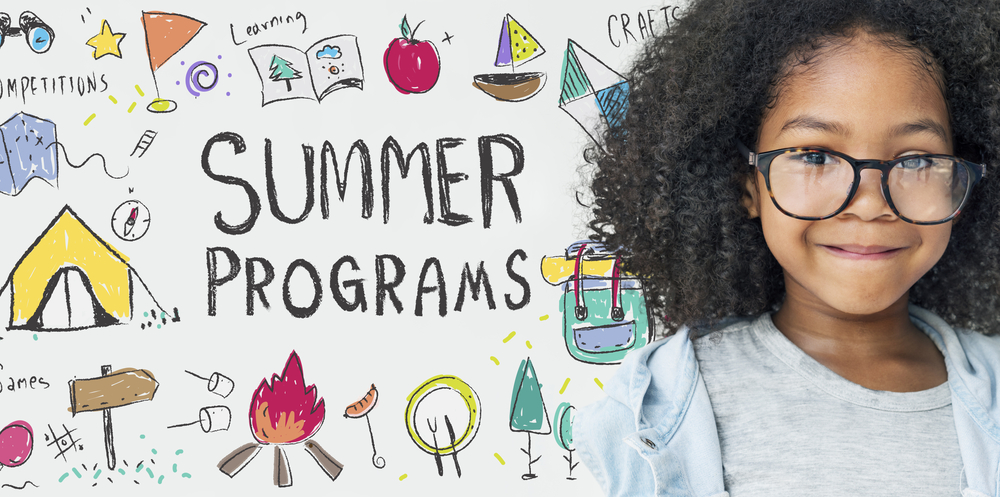Counting proficiency Addition & Subtraction Worksheets for 3-Year-Olds
11 filtered results
-
From - To
Discover our engaging Counting Proficiency Addition & Subtraction Worksheets specially designed for 3-year-olds! These vibrant, interactive worksheets make learning essential math concepts fun and easy for young learners. Your child will develop foundational skills in counting, addition, and subtraction through playful activities, helping them build confidence in math. Each worksheet focuses on key learning areas, including number recognition and simple problem-solving, tailored to their developmental stage. Encourage your child to explore numbers while enhancing their critical thinking abilities. Start their math journey today and watch them thrive with our expertly crafted resources that promote early mathematical understanding!


Adding Up with Old MacDonald Worksheet


Add up the Pennies Worksheet
Counting proficiency and early skills in addition and subtraction are foundational building blocks for a child's mathematical development. For parents and teachers, fostering these skills in 3-year-olds is essential for numerous reasons. Firstly, early numeracy skills are strongly linked to future academic success. Children who engage with numbers and develop counting proficiency are more likely to excel in math later in their educational journey.
Additionally, counting offers children opportunities to enhance their cognitive abilities, including problem-solving and critical thinking skills. As they count, add, or subtract, they learn to recognize patterns and understand relationships between numbers, which in turn boosts their overall comprehension and reasoning abilities.
Socially, engaging in counting games and activities can enhance children’s communication skills and encourage collaborative play. It helps develop their ability to take turns and share, which are vital social skills.
Finally, an early focus on these concepts supports their self-esteem. Successfully mastering counting, addition, and subtraction creates a sense of accomplishment and confidence. Parents and teachers should prioritize these skills to provide a strong, nurturing environment where children can thrive both academically and socially, setting them on a positive pathway for lifelong learning.





 Assign to My Students
Assign to My Students





















